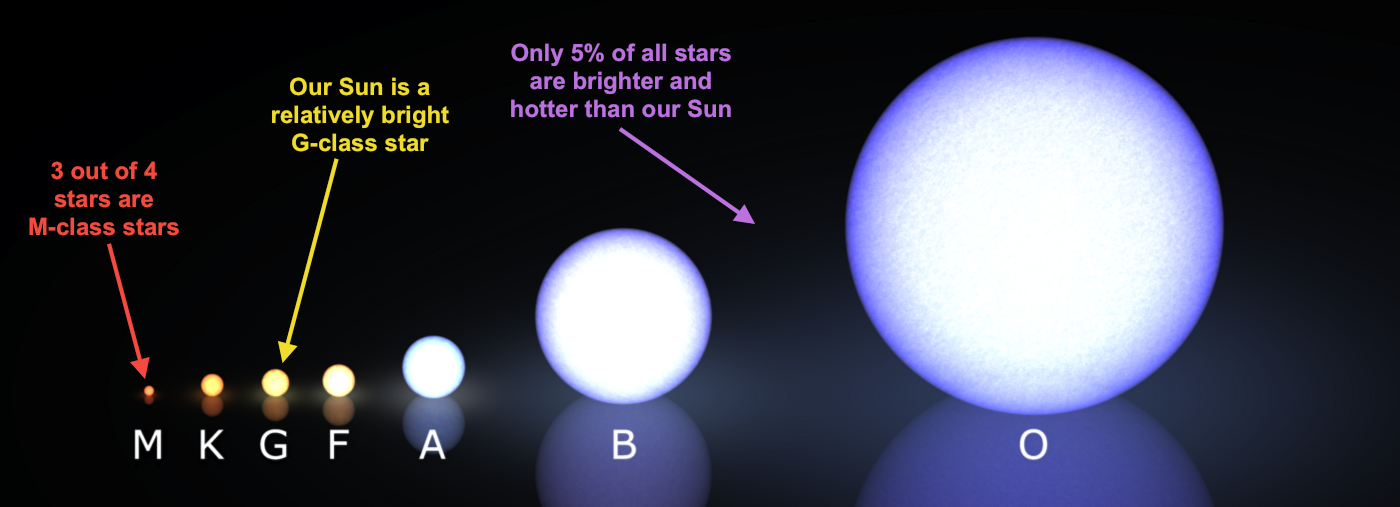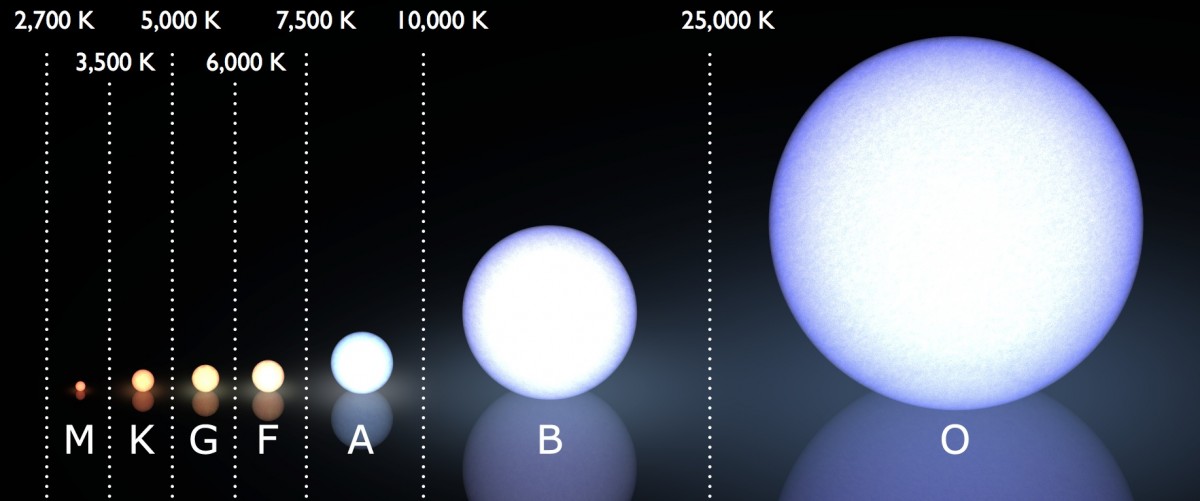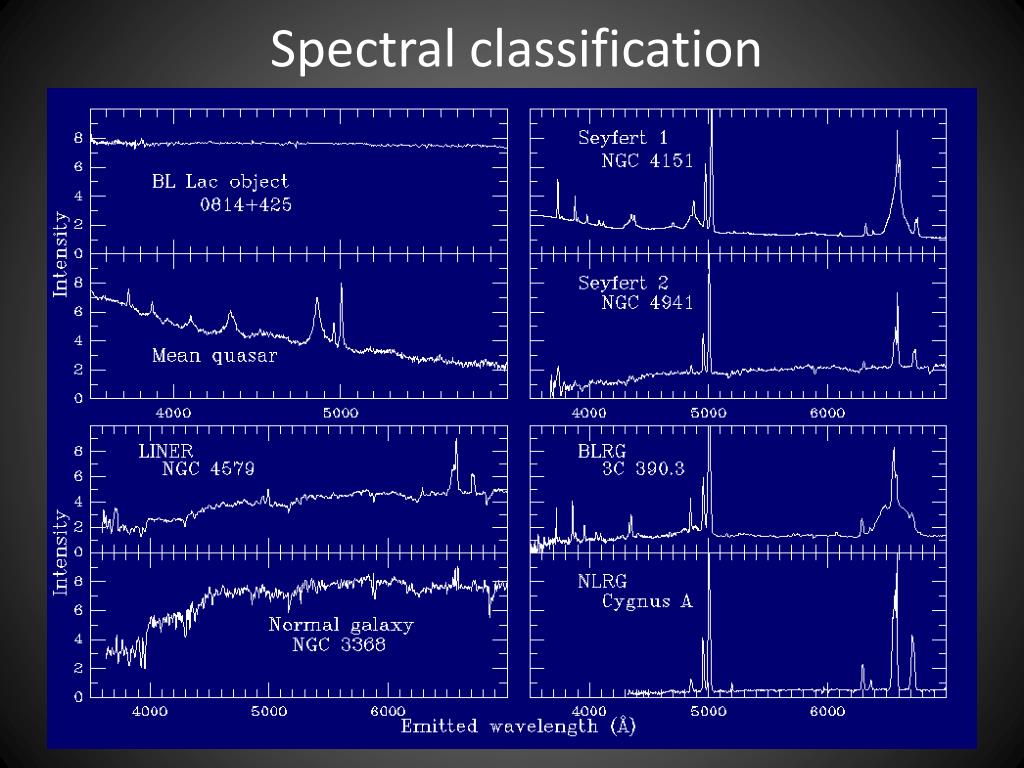

A simplified version of the MK system of luminosity classes is shown in the table below.Star Spectral Classification Stellar Spectral Types To account for this a second classification scheme of Luminosity Class was added to the original concept of Spectral Class. When the star's were plotted on an HR diagram it also became apparent that two stars could have the same effective temperature (hence also colour and spectral class) but vary enormously in luminosity and thus absolute magnitude. One problem facing early attempts at classifying stellar spectra was the fact that two spectra could have the same lines present, indicating that the stars had the same effective temperature, but the lines in one star's spectrum were broader than in the other. WN and WC are two types of Wolf-Rayet stars, the same temperature as O-class stars but showing strong broad emission lines of carbon and nitrogen respectively.S-class stars are similar temperature to M stars but have bands of zirconium oxide and lanthanum oxide.N-class stars are carbon-rich stars with the same temperature as M-class stars.R-class stars have the same temperature as K-class stars but have high abundances of carbon and carbon molecules.Some stars exhibit spectral anomalies resulting in them being given special classifications: Tentative new (2000) classification for very low mass stars. These factors are discussed in more detail in later sections of the site. The four columns on the right of the table provide comparison of a star's mass, radius and luminosity (power output) with respect to the Sun and the main sequence lifespan for a star of that spectral class. The basic characteristics of each spectral class are summarised in the following table. Each spectral class is thus broken down into ten subdivisions so that, for example, an F2 star is hotter than an F7 star. The basic system of a letter to denote spectral class is further refined by adding a number from 0 to 9 following it.
#MAIN SEQUENCE SPECTRAL CLASS FREE#
Here is a common example but feel free to make up your own. Many people use a memory device or mnemonic to help them.

Rather than reassign letters to different spectra, some classes were merged and the whole sequence arranged in order of decreasing temperature. This is an historical artefact as classes were assigned to spectra before the underlying physical relationship was known. The letters assigned to each class seem confusing and out of order.

For the moment, however, we will focus on the seven original classes. recent discoveries have led to tentative new classifications for even cooler L-class stars. These classes go from hot to cool with O the hottest and M, cool. Most stars fit into one of the following types or spectral classes: The standard spectral class classification scheme is thus based on temperature. As the number of possible electron transitions is much greater in molecules than single atoms there are many possible spectral lines that can form hence cool stars typically have many lines. Some stars are cool enough that molecules can exist in outer layers without being ripped apart. The absence of helium lines simply means that the conditions are not right for helium lines to form or be abundant in that star. In fact helium is the second most abundant element in the Universe and in stars. Even though spectral lines due to helium are not found in cool stars it does not mean that helium is missing from the star. In most stars the temperature is too cool for helium to ionise so no such lines can form in the spectrum. In very hot stars, helium can be ionised so we can expect to see spectral lines due to absorption by helium ions. The variations in spectral lines for different stars are due primarily to the difference in temperature of the outer layers of gas in the star. This is the temperature of a black body having the same size and luminosity as the star and is determined by Stefan's Law. By temperature we really mean the effective temperature of the star (sometimes called the surface temperature). The key factor at work here is temperature. The O-class star has weak lines except those for ionised He + and it also has a continuum that is strong in the UV region. If we compare an O-class star with and M-class star they have very different lines. Why do different stars have different lines? This question is the key to helping us classify stars. Credit: Adapted from data in Project CLEA Classification of Stellar Spectra Exercise.


 0 kommentar(er)
0 kommentar(er)
